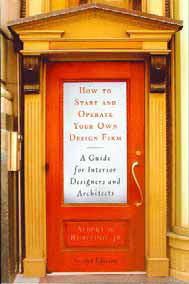professional development
‘During a presentation to a recent conference for the swimming pool and spa industry, I tossed this nugget to the audience: “By a show of hands, how many of you in this room believe that most people think highly of our industry? Please be honest.” ’ That’s how Brian Van Bower began his Aqua Culture column in the May 2003 edition of WaterShapes. He continued: ‘It was a mixed group of more than 160 people representing
‘Many great artists are best known for working in identifiable genres, styles or modes or with specific materials, themes or some other defining detail. From Picasso’s cubist abstractions to Mozart’s cascading melodies or Rodin’s bronzes to Frank Gehry’s sweeping architectural forms, geniuses of all stripes are in one way or another known for qualities that are
‘With spring upon us,’ began Stephanie Rose’s column in May 2007, ‘calendars of local events are filling up with garden tours of all shapes and sizes. From large estate tours and special events at botanical gardens to tours of wonderful neighborhoods staged by local garden clubs, there’s much to be seen while wandering through
Back in 2001, I took a job working for a high-volume pool-construction firm as one of its 30 salespeople. For the first four years or so, I did all of my design work by hand. Quantity was always king in that operation, so I never even left the office: Someone would hand me a set of plans and I'd start working, despite the fact I'd never walked the site, seen its surroundings or had any
'For years,' wrote David Tisherman in his Details column in the June 2005 issue of the magazine, 'people have asked me where I get my ideas - pools raised out of the ground, the small spillways, the drain details, the modular deck treatments, the color usage and the use of reflection, to name just a few. "Through my design education" is the short answer, of course, but I can get more specific if we take a look at
If there's one thing most designers of all types have in common, it's that we tend to possess built-in senses of personal independence. I believe that's why most of us, at some point or other in our careers, consider taking the big step of going out and starting our own practices. I haven't done that as yet, and a big part of the "why" has to do with knowing that a great many of those who do hang their own shingles wind up failing - often sooner rather than later. Yet even though I enjoy the security of working for a company rather than running one myself, I must confess that, for a long time now, the idea has intrigued me - if for no other reason than I want to know what it takes to make a go of it. That's how I came to pick up a copy of How to Start and Operate Your Own Design Firm by Albert W. Rubeling, Jr. (2nd edition, Allworth Press, 2007). This 240-page text offers a wonderfully thorough discussion of the challenges I'd always imagined, and I think it would be of use even to those who are already up and running in addition to those who are only contemplating or curious about taking the plunge. The author obviously has a
If there's one thing most designers of all types have in common, it's that we tend to possess built-in senses of personal independence. I believe that's why most of us, at some point or other in our careers, consider taking the big step of going out and starting our own practices. I haven't done that as yet, and a big part of the "why" has to do with knowing that a great many of those who do hang their own shingles wind up failing - often sooner rather than later. Yet even though I enjoy the security of working for a company rather than running one myself, I must confess that, for a long time now, the idea has intrigued me - if for no other reason than I want to know what it takes to make a go of it. That's how I came to pick up a copy of How to Start and Operate Your Own Design Firm by Albert W. Rubeling, Jr. (2nd edition, Allworth Press, 2007). This 240-page text offers a wonderfully thorough discussion of the challenges I'd always imagined, and I think it would be of use even to those who are already up and running in addition to those who are only contemplating or curious about taking the plunge. The author obviously has a
I'm endlessly fascinated by project failures. Just like a driver slowing down to view a traffic mishap, I'm irresistibly drawn to collapsed retaining walls, sunken patios, rows of dead trees, out-of-level decks and various other landscape catastrophes. Whatever has happened, these projects capture my attention. To be sure, these failures don't approach the gravity of problems that might arise with large architectural structures, but that doesn't lessen our
In Costa Rica, the people have a saying, pura vida, which in English roughly translates to "pure life." We also are known to say, cual es el apuro, which means, "What's the hurry?" Those two unofficial national slogans reflect the essence of life in this country, where relaxation, an appreciation of natural beauty, love of family and a peaceful spirit are defining characteristics for the society. But even in a place like Costa Rica, where the pace of life is slow, relaxed and easy, timing is still everything. About three years ago, it occurred to me that a variety of social and economic factors were creating a watershape market in Costa Rica in which a truly high-end, quality-oriented custom company could become quite successful. Those factors - Costa Rica's rising profile as



















Meeting Minds